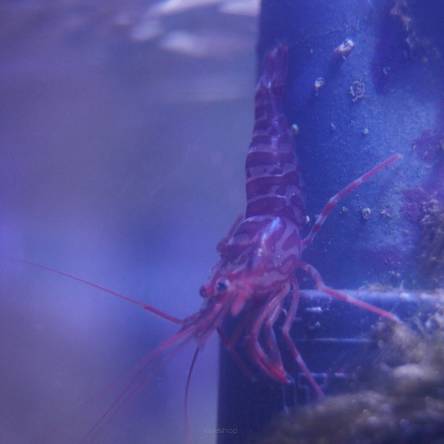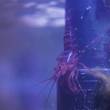Lysmata seticaudata 2cm (aiptasia)
- Manufacturer: JadwigaMorska
-
Availability:
 None
(0 pcs.)
None
(0 pcs.)
- pcs.
- €18.45
Lysmata seticaudata, also known as the "skunk cleaner shrimp," is a species of marine shrimp belonging to the family Hippolytidae. It is valued in marine aquariums for its ability to clean other fish of parasites and its decorative coloration. Here is a detailed description of this species and information on its breeding and its ability to consume aiptasia.
Description of Lysmata seticaudata:
-
Appearance: Lysmata seticaudata has a light-colored body with dark vertical stripes, giving it a distinctive appearance reminiscent of skunk stripes. Its appendages and antennae are transparent and delicate, adding to its charm.
-
Size: Individuals of this species typically reach a body length ranging from 2.5 to 5 centimeters.
-
Behavior: It is a shrimp with calm and sociable behavior. Its main role in the aquarium is to clean the bodies of other fish from parasites and dead tissue, making it the "cleaner" of the aquarium.
Breeding Lysmata seticaudata in marine aquariums:
-
Aquarium: An aquarium intended for breeding Lysmata seticaudata should be adequately tailored to its needs. Provide places to hide and shelter, such as coral reefs, rocks, or decorations.
-
Water Parameters: Maintaining stable water parameters is crucial. The water in the aquarium should have a temperature range of 24-28°C (75-82°F) and an appropriate level of salinity, typically between 1.023 and 1.025. Good water filtration and regular water changes are important.
-
Feeding: Lysmata seticaudata is a predator that feeds on parasites and dead tissue. You can feed it with various food sources, such as frozen shrimp, mysid shrimp, marine fish food, and specialized shrimp diets. Its natural behavior involves cleaning the bodies of other fish in the aquarium.
Regarding its ability to consume aiptasia, Lysmata seticaudata is known to assist in controlling the population of these harmful organisms in aquariums. Aiptasia are small, brown or transparent parasites that attach to the bodies of fish and corals, which can lead to their demise. Lysmata seticaudata is one of the natural predators of these parasites and can help eliminate them from the aquarium.
However, it's important to note that Lysmata seticaudata may not be able to completely eradicate the aiptasia population in a large aquarium, so monitoring and taking appropriate control measures, if necessary, are still required.



